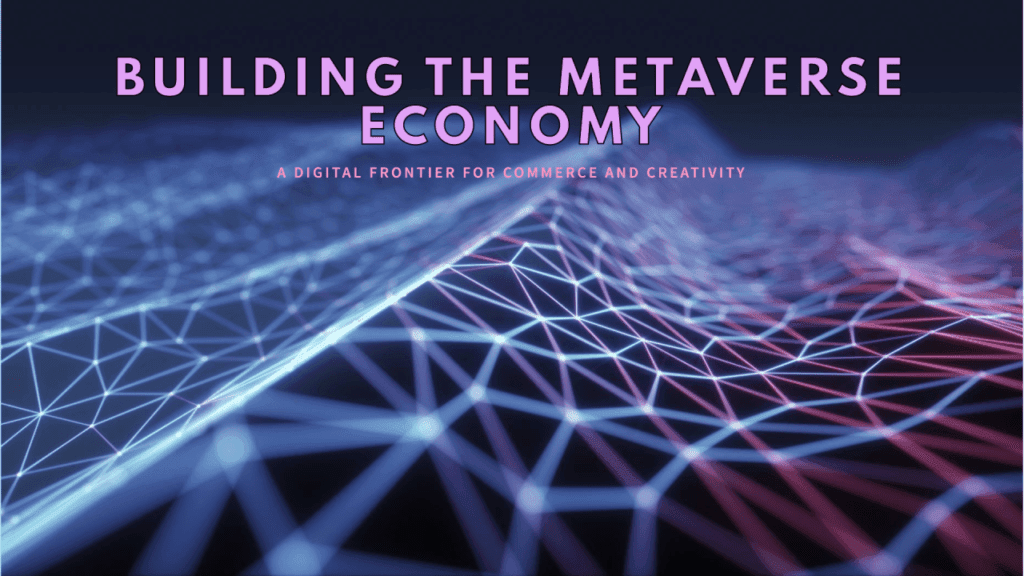

Introduction: The Future of Virtual Commerce
The metaverse is no longer a futuristic buzzword; it’s an evolving digital realm where people socialize, play, and even work. At the heart of this transformation lies cryptocurrency, powering seamless and secure transactions in these virtual spaces.
From buying virtual land to paying for digital art, cryptocurrencies are building vibrant digital economies within the metaverse. Here, we unravel how crypto adoption is redefining the financial backbone of virtual worlds and paving the way for innovative opportunities.
1. The Role of Cryptocurrencies in the Metaverse
Cryptocurrencies act as the lifeblood of virtual economies. Their decentralized nature makes them ideal for transactions in a borderless digital space.
Key Roles of Crypto in the Metaverse:
- Seamless Payments: Users can make instant, cross-border payments without relying on traditional banking systems.
- Ownership of Assets: Blockchain technology ensures proof of ownership for digital assets like NFTs, virtual real estate, and avatars.
- Interoperability: Cryptocurrencies like Ethereum enable transactions across different meta space platforms, breaking silos.
For instance, Decentraland and The Sandbox have integrated native tokens like $MANA and $SAND to facilitate economic activity in their ecosystems.
2. Building Thriving Virtual Economies
Cryptocurrencies empower metaverse platforms to create self-sustaining economies where users can:
- Buy and Sell Assets: Cryptocurrency makes trading seamless from virtual homes to rare digital collectibles.
- Earn Rewards: Play-to-earn models, powered by tokens, incentivize user engagement by offering crypto rewards for completing tasks or achievements.
- Monetize Creativity: Artists and developers can mint NFTs and sell their creations directly to users, cutting out intermediaries.
These economies are not just functional; they’re thriving. Virtual land sales reached billions in 2023, driven by increasing demand for digital spaces in the metaverse.
3. Security and Transparency with Blockchain
Blockchain technology underpins cryptocurrencies, bringing unparalleled security and transparency to metaverse transactions.
Advantages of Blockchain in the Metaverse:
- Fraud Prevention: Immutable ledgers reduce the risk of fraud by ensuring every transaction is traceable.
- Decentralized Control: No single entity has control, promoting fairness in financial interactions.
- Smart Contracts: Automated contracts execute transactions without third-party intervention, reducing costs and delays.
For example, in platforms like Axie Infinity, smart contracts manage gameplay rewards and asset transfers, ensuring a fair system for all participants.
4. Crypto as a Gateway to Financial Inclusion
The metaverse and cryptocurrencies are democratizing access to financial systems, especially for those excluded from traditional banking.
- Global Accessibility: Anyone with internet access can participate in metaverse economies using crypto.
- Low Barriers to Entry: Users can start small by purchasing fractional tokens, lowering the cost of entry.
- Opportunities for Developing Nations: In regions where traditional job markets are limited, the metaverse offers new income streams through play-to-earn games and virtual gigs.
This inclusivity could drive massive crypto adoption in the coming years, bridging the gap between the virtual and real worlds.
5. Challenges in Crypto Adoption
Despite its potential, crypto adoption in the meta space faces significant hurdles:
- Volatility: The fluctuating value of cryptocurrencies can deter users from making transactions.
- Complexity: Non-tech-savvy users may find crypto wallets and blockchain technology intimidating.
- Regulation: Governments worldwide are still grappling with how to regulate cryptocurrencies, creating uncertainty.
Addressing these challenges requires user-friendly interfaces, transaction stablecoins, and clear regulatory frameworks.
6. Real-World Examples of Crypto in the Metaverse
Several metaverse platforms have successfully integrated cryptocurrencies:
- Decentraland ($MANA): A virtual world where users can buy land, host events, and monetize spaces using $MANA.
- The Sandbox ($SAND): A platform where users can build and trade virtual experiences and assets.
- Axie Infinity ($AXS): A play-to-earn game where users earn tokens by battling, breeding, and trading creatures called Axies.
These examples highlight how cryptocurrencies are driving user engagement and creating lucrative opportunities within the metaverse.
Conclusion: Crypto and the Metaverse—The Perfect Pair
“From Virtual Dreams to Real Value”
Cryptocurrencies and the meta space are a match made in digital heaven. By enabling secure, transparent, and seamless transactions, crypto fuels the growth of virtual economies that feel as real as any physical marketplace.
While challenges remain, the synergy between these technologies holds the promise of a future where virtual and real-world economies coexist harmoniously. As adoption grows, the line between our physical and digital lives will blur, making the metaverse an integral part of our everyday reality.
FAQs
1. How do cryptocurrencies enhance the metaverse experience?
Cryptocurrencies enable seamless transactions, ensure asset ownership through blockchain, and foster economic growth by allowing users to buy, sell, and earn in virtual economies.
2. What are the risks of using cryptocurrencies in the metaverse?
Risks include market volatility, security vulnerabilities in wallets, and regulatory uncertainty, which could impact adoption and user confidence.
3. Can cryptocurrencies make the metaverse accessible to everyone?
Yes, cryptocurrencies lower barriers to entry by providing global access and opportunities for financial inclusion, especially for unbanked populations.



